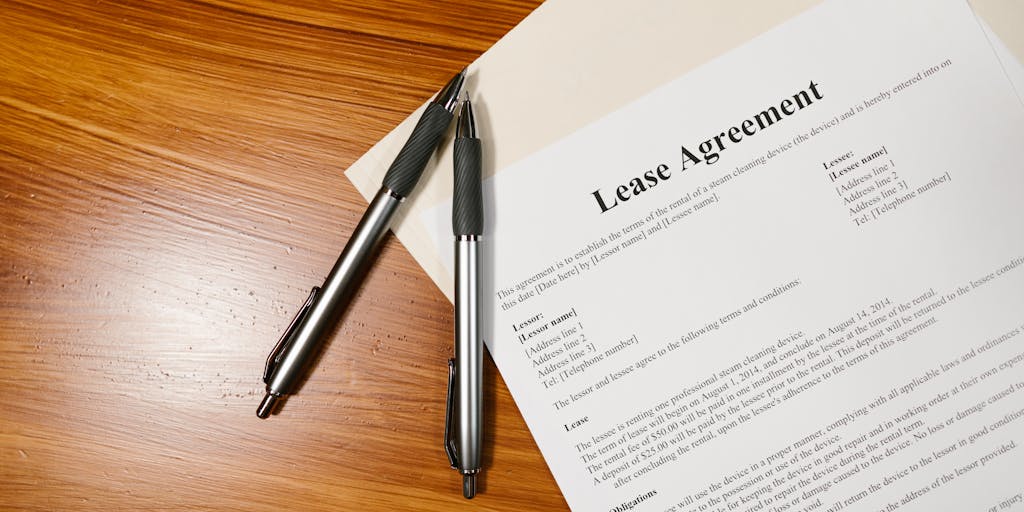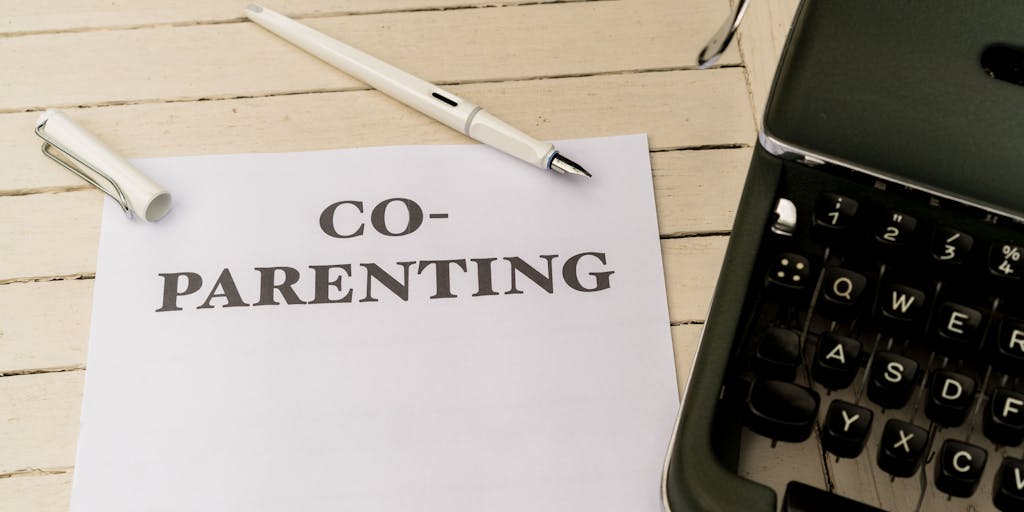Child support can often feel like a heavy burden, especially if circumstances change after the initial agreement. Whether you’re facing financial difficulties or a change in your living situation, understanding how to navigate child support obligations is crucial. So, how can you approach this sensitive topic? Let’s explore the options available to you.
How to Stop Child Support Withholding

If you find yourself in a situation where you need to stop child support withholding, the first step is to understand the legal framework surrounding your obligations. Child support is typically withheld from your paycheck, and stopping this process requires a formal request to the court. But what does that entail?
To initiate the process, you’ll need to file a motion with the court that originally ordered the child support. This motion should clearly outline your reasons for requesting the cessation of payments. Common reasons include:
- Change in Financial Status: If you’ve lost your job or experienced a significant decrease in income, this can be a valid reason.
- Change in Custody: If you have gained primary custody of your child, you may be eligible to stop payments.
- Child Reaches Adulthood: Once your child turns 18 or graduates high school, child support obligations typically end.
It’s essential to gather any supporting documentation that can substantiate your claims. This might include pay stubs, tax returns, or any legal documents related to custody changes. For more detailed guidance, you can refer to resources like Texas Law Help.
When is someone eligible to have child support withholding stopped?
Understanding eligibility for stopping child support withholding can be complex, but there are specific scenarios that courts typically recognize. Have you ever wondered if your situation qualifies? Here are some key points to consider:
- Job Loss or Income Reduction: If you can demonstrate that your financial situation has changed drastically, the court may consider this a valid reason.
- Change in Custody Arrangements: If you have taken on more parenting responsibilities, such as having your child live with you full-time, this can impact your obligation.
- Child’s Age or Circumstances: As mentioned earlier, once a child reaches adulthood or is no longer dependent, support payments may cease.
It’s important to note that simply stopping payments without court approval can lead to serious legal consequences, including wage garnishment or even jail time. Therefore, always seek legal advice before making any decisions. For further insights, you might find it helpful to read about experiences shared on platforms like Reddit or consult with professionals who specialize in family law, such as those at The Texas Trial Attorney.
Ultimately, navigating child support can be challenging, but understanding your rights and options is the first step toward finding a resolution that works for you and your family. Remember, you’re not alone in this journey, and there are resources available to help you through the process.
Will the court automatically approve my Petition?
When you file a petition to modify or terminate child support, you might wonder if the court will automatically grant your request. The answer is no; the court does not automatically approve petitions. Instead, it carefully evaluates each case based on the evidence presented and the best interests of the child involved.
For instance, if you’ve lost your job or experienced a significant change in your financial situation, you’ll need to provide documentation to support your claim. Courts typically look for substantial changes in circumstances, such as a decrease in income or changes in the child’s needs. It’s essential to present a compelling case, as the burden of proof lies with you.
Moreover, the court may schedule a hearing where both parties can present their arguments. This is your opportunity to explain why the modification is necessary. If you’re unsure about the process, seeking legal advice can be beneficial. You can find more information on how to navigate this process at Bryan Fagan’s blog.
What do I need to do to stop child support withholding?
Stopping child support withholding is a process that requires careful attention to detail. If you believe you have valid reasons to stop the withholding, the first step is to understand the legal requirements in your state. Generally, you’ll need to file a motion with the court that originally ordered the child support.
It’s crucial to gather all necessary documentation that supports your case. This may include proof of income changes, evidence of the child’s living situation, or any other relevant information. Remember, the court’s primary concern is the welfare of the child, so your reasons must align with their best interests.
Additionally, you might want to consult resources like the Texas Attorney General’s website for specific guidelines on modifying child support in Texas. They provide a wealth of information that can help you understand the steps involved.
Step 1: Fill out the forms.
The first step in stopping child support withholding is to fill out the necessary forms accurately. This may seem straightforward, but it’s essential to ensure that all information is correct and complete. Incomplete or incorrect forms can lead to delays or even rejection of your petition.
Start by obtaining the correct forms from your local court or online resources. Many courts have specific forms for modifying child support, and using the right ones is crucial. Once you have the forms, take your time to fill them out, ensuring that you provide all required information, including your case number and details about your financial situation.
After completing the forms, it’s wise to review them or have someone else look them over to catch any mistakes. This attention to detail can make a significant difference in the outcome of your petition. If you need assistance, consider reaching out to legal professionals or community resources that can guide you through the process. For more insights, you can check out this helpful blog.
Step 2: File your petition.
Once you’ve gathered your reasons for wanting to modify or terminate your child support obligations, the next crucial step is to file your petition with the appropriate court. This process can feel daunting, but think of it as taking control of your situation. You’re not just filling out forms; you’re advocating for your rights and your financial well-being.
When preparing your petition, ensure that you include all relevant details, such as your current financial situation, any changes in circumstances since the original support order, and why you believe a modification is necessary. Courts typically require specific forms, which can often be found on your local court’s website or through legal aid resources. If you’re unsure about the process, consider seeking advice from a legal professional who specializes in family law. They can provide insights tailored to your unique situation.
Filing your petition is not just a formality; it’s a significant step that sets the stage for the upcoming legal proceedings. Remember, the more thorough and clear your petition is, the better your chances of a favorable outcome.
Step 3: Send a file-stamped copy of the Petition to the other party.
After filing your petition, the next step is to ensure that the other party is informed. This means you need to send a file-stamped copy of the petition to them. Why is this important? Well, it’s not just about following legal protocol; it’s about ensuring that both parties have the opportunity to present their case. This step fosters transparency and fairness in the legal process.
Typically, you can send the copy via certified mail or through a process server, depending on your jurisdiction’s requirements. Make sure to keep a record of how and when you sent the documents, as this may be important for your case. If the other party is uncooperative or difficult to reach, you might need to explore alternative methods of service, which your attorney can help you navigate.
By keeping the lines of communication open, you’re not only adhering to legal requirements but also setting a tone of cooperation, which can be beneficial in the long run.
Step 4: Schedule a hearing.
Now that you’ve filed your petition and notified the other party, it’s time to schedule a hearing. This is where the real discussion happens, and it’s your chance to present your case before a judge. Scheduling a hearing can vary by jurisdiction, so it’s essential to check with your local court for specific procedures. Some courts allow you to schedule online, while others may require you to call or visit in person.
Before the hearing, prepare thoroughly. Gather all necessary documentation that supports your case, such as proof of income changes, expenses, or any other relevant information. This preparation can make a significant difference in how your case is perceived. Think of it as preparing for a big presentation; the more prepared you are, the more confident you’ll feel.
During the hearing, both parties will have the opportunity to present their arguments. It’s crucial to remain calm and respectful, even if emotions run high. Remember, the judge is there to make a decision based on the evidence presented, so clarity and composure are key. If you’re feeling overwhelmed, consider reaching out to a legal professional for guidance on how to navigate the hearing process effectively.
Step 5: Go to the hearing.
So, you’ve made it to the hearing—this is a crucial step in your journey to potentially modify or terminate your child support obligations. You might be feeling a mix of anxiety and determination, and that’s completely normal. This is your chance to present your case, so preparation is key. Have you gathered all the necessary documents? This could include proof of income changes, evidence of your current financial situation, or any other relevant information that supports your request.
When you arrive, remember that the hearing is not just a formality; it’s an opportunity for you to explain why you believe your child support should be modified or terminated. The judge will listen to both sides, so be ready to articulate your reasons clearly and respectfully. It might help to practice what you want to say beforehand. Think about how your circumstances have changed since the original order was made. For instance, if you’ve lost your job or faced unexpected medical expenses, these are important points to highlight.
Also, consider the emotional aspect of this process. You’re not just discussing numbers; you’re talking about your life and your relationship with your child. Keeping a calm demeanor can go a long way in making a positive impression. After all, the judge is looking for a fair resolution that considers the best interests of the child as well as your current situation.
Does it cost anything to file a Petition to Terminate Withholding for Child Support?
One of the first questions that might pop into your mind is whether there are any costs associated with filing a Petition to Terminate Withholding for Child Support. The answer can vary depending on your location and specific circumstances. Generally, there may be filing fees involved, but many courts offer fee waivers for individuals who demonstrate financial hardship. It’s worth checking with your local court or legal aid services to see what options are available to you.
Additionally, while the initial filing might have a cost, consider the long-term financial implications of your petition. If successful, terminating or modifying your child support could lead to significant savings. It’s a bit of a balancing act—investing a small amount now could potentially relieve you of a larger financial burden in the future.
Have you thought about how this decision impacts not just your finances but also your relationship with your child? It’s essential to weigh all aspects before proceeding. If you’re unsure, seeking advice from a legal professional can provide clarity and help you navigate the process more effectively.
Should I talk with a lawyer to find out if I can ask for my child support withholding to stop?
Absolutely! Consulting with a lawyer can be one of the best steps you take in this process. A legal expert can provide you with tailored advice based on your unique situation and help you understand the nuances of child support laws in your state. They can also assist you in preparing your case for the hearing, ensuring that you present the strongest argument possible.
Many people underestimate the complexity of family law, and having a knowledgeable advocate on your side can make a significant difference. They can help you gather the necessary documentation, understand the potential outcomes, and even represent you in court if needed. Plus, they can clarify any misconceptions you might have about the process, such as whether you can modify your support obligations based on changes in your financial situation.
If you’re still on the fence about hiring a lawyer, consider the potential risks of navigating this process alone. You might find it beneficial to read more about others’ experiences, such as those shared on platforms like Quora, where individuals discuss their journeys with child support modifications. Ultimately, investing in legal advice could save you time, stress, and money in the long run.
I need to change a custody, visitation, or support order (Modification).
Have you found yourself in a situation where your current child support order no longer reflects your financial reality or the needs of your child? You’re not alone. Life changes—whether it’s a job loss, a new job, or changes in your child’s needs—can necessitate a modification of custody, visitation, or support orders. Understanding how to navigate this process can feel overwhelming, but it’s essential to know that you have options.
To initiate a modification, you typically need to file a motion with the court that issued the original order. This motion should clearly outline the reasons for the requested changes. For instance, if you’ve lost your job, you might argue that your financial situation has changed significantly, warranting a reduction in support payments. Similarly, if your child’s needs have changed—perhaps they require more medical care or educational support—you can request an increase in support.
It’s crucial to gather evidence to support your case. This could include pay stubs, tax returns, or documentation of your child’s needs. Courts generally look for substantial changes in circumstances before approving modifications, so be prepared to demonstrate how your situation has evolved. If you’re unsure about the process, consulting with a legal expert can provide clarity and guidance. You can find resources and assistance through the Texas Attorney General’s Child Support Division.
I need to respond to a modification case.
Receiving a notice about a modification case can be daunting. You might be wondering, “What do I do now?” First, it’s important to understand that you have the right to respond to any proposed changes to your child support order. Ignoring the notice can lead to unfavorable outcomes, so taking action is crucial.
Start by reviewing the modification request carefully. What changes are being proposed? Are they reasonable? Once you have a clear understanding, you can prepare your response. This may involve filing a counter-motion if you disagree with the proposed changes or simply providing evidence to support your position. For example, if the other parent is requesting an increase in support but you believe their financial situation has improved, you can present evidence to counter their claims.
It’s also wise to consider mediation as a first step. Many courts encourage parents to resolve disputes amicably before heading to trial. Mediation can save time, reduce stress, and often leads to more satisfactory outcomes for both parties. If you feel overwhelmed, seeking legal advice can help you navigate this process effectively.
Petition to Terminate Withholding for Child Support
Are you looking to terminate child support withholding? This can be a complex process, but understanding the steps involved can make it more manageable. Termination of withholding typically occurs when the child reaches the age of majority, graduates from high school, or if there are significant changes in circumstances that warrant a review of the support order.
To initiate this process, you’ll need to file a petition with the court. This petition should clearly state the reasons for your request to terminate withholding. For instance, if your child has turned 18 and graduated, you can provide documentation to support this claim. It’s essential to ensure that all obligations are met before seeking termination, as failing to do so can lead to complications.
Once your petition is filed, the court will review your case. Be prepared to present evidence and possibly attend a hearing. If you’re unsure about how to proceed, consulting with a legal professional can provide you with the necessary insights and help you prepare your case effectively. Remember, the goal is to ensure that the best interests of your child are always prioritized, even as you navigate these changes.
Petition to Terminate Withholding for Child Support – Guided Form
Are you feeling overwhelmed by child support obligations? You’re not alone. Many parents find themselves in situations where they need to reassess their financial responsibilities. A Petition to Terminate Withholding for Child Support is a formal request to the court to stop the automatic deductions from your paycheck. This process can seem daunting, but understanding the steps can make it manageable.
To begin, you’ll need to gather relevant information, such as your current financial situation, any changes in custody arrangements, or significant life events that may affect your ability to pay. For instance, if you’ve lost your job or experienced a substantial decrease in income, these factors can be crucial in your petition.
Filing the petition typically involves completing a guided form, which outlines your reasons for requesting the termination. It’s essential to be clear and honest in your explanations. Courts appreciate transparency, and providing supporting documentation can strengthen your case. Once submitted, the court will review your petition and may schedule a hearing to discuss your request further.
Remember, this process is not just about stopping payments; it’s about ensuring that the best interests of your child are also considered. Engaging with a legal professional can provide you with tailored advice and increase your chances of a favorable outcome.
Respondent’s Answer or Waiver to Petition to Terminate Withholding for Child Support – Guided Form
Have you received a petition regarding child support termination? Understanding how to respond is crucial. The Respondent’s Answer or Waiver to Petition to Terminate Withholding for Child Support is your opportunity to express your stance on the matter. Whether you agree with the petition or wish to contest it, your response can significantly impact the court’s decision.
If you agree with the petition, you can submit a waiver, which essentially states that you do not oppose the termination of withholding. This can expedite the process and may lead to a quicker resolution. On the other hand, if you believe that child support should continue, you’ll need to file a formal answer. This document should outline your reasons for opposing the termination, such as ongoing financial needs or changes in the child’s circumstances.
It’s important to be thorough in your response. Courts look for detailed explanations and supporting evidence. For example, if the child’s needs have increased or if there are new expenses related to their education or healthcare, make sure to include that information. Engaging with a legal expert can help you navigate this process effectively, ensuring that your voice is heard.
Order to Employer to Terminate Withholding for Support
Once the court has approved your petition to terminate child support withholding, the next step is to ensure that your employer receives the necessary documentation. An Order to Employer to Terminate Withholding for Support is a formal directive that instructs your employer to stop deducting child support payments from your paycheck.
This order is crucial because it legally binds your employer to cease withholding. It’s essential to provide your employer with a copy of this order promptly to avoid any confusion or continued deductions. You might also want to follow up with your HR department to confirm that they have received and processed the order.
In some cases, employers may require additional documentation or clarification, so being proactive can help smooth the transition. If you encounter any issues, don’t hesitate to reach out to a legal professional who can assist you in ensuring that the order is executed correctly.
Ultimately, navigating child support obligations can be complex, but understanding the processes involved can empower you to take control of your situation. Whether you’re petitioning for termination or responding to a petition, being informed and prepared is key to achieving a favorable outcome.
How Can a Man Get Out of Paying Child Support?

When faced with child support obligations, many men wonder if there are legitimate ways to reduce or eliminate these payments. It’s a complex issue, often filled with emotional and financial stress. The first step is understanding that child support is designed to ensure the well-being of the child, but there are circumstances where adjustments can be made. Have you ever thought about how life changes can impact your financial responsibilities?
One common way to seek a modification is through a significant change in circumstances. This could include job loss, a substantial decrease in income, or even a change in the child’s needs. For instance, if you were laid off and are now earning significantly less, you might be able to petition the court for a reduction in your payments. It’s essential to gather documentation, such as pay stubs or termination letters, to support your case.
Another avenue is proving that the child’s needs have changed. If the child is now living with you more often or if their financial needs have decreased, you may have grounds to request a modification. Courts typically look favorably on arrangements that prioritize the child’s best interests, so presenting a solid case is crucial.
However, it’s vital to approach this process legally. Attempting to evade child support payments can lead to severe consequences, including wage garnishment or even jail time. Consulting with a family law attorney can provide clarity on your options and help navigate the legal landscape effectively.
Legal Rights and Responsibilities of Parents in Child Support Cases
Understanding your legal rights and responsibilities is crucial when dealing with child support. Both parents have a duty to support their children financially, and this obligation is typically enforced by the court. But what happens if you feel the current arrangement is unfair?
As a parent, you have the right to request a review of your child support order. This can be initiated if you believe there has been a significant change in your financial situation or the child’s needs. It’s also important to know that you can contest the amount of child support if you believe it was calculated incorrectly. For example, if your income has changed or if you have additional dependents, these factors should be considered in your support obligations.
On the flip side, you also have responsibilities. Failing to pay child support can lead to serious legal repercussions. Courts take these obligations seriously, and non-compliance can result in penalties, including loss of driving privileges or even jail time. It’s a delicate balance, and understanding both sides can help you navigate this challenging situation.
Factors Considered in Child Support Calculations (Beyond Income, Needs, and Medical Expenses)
When calculating child support, many people think it’s all about income and basic needs. However, there are several other factors that courts consider, which can significantly impact the final amount. Have you ever wondered what else might play a role in these calculations?
- Parenting Time: The amount of time each parent spends with the child can influence support calculations. If you have the child for a significant portion of the time, this may reduce your financial obligation.
- Educational Expenses: Costs related to the child’s education, such as tuition for private schools or college, can also be factored in. If you’re contributing to these expenses, it may affect the overall support amount.
- Special Needs: If the child has special needs that require additional financial support, this will be taken into account. Courts aim to ensure that the child’s unique requirements are met.
- Health Insurance: The cost of health insurance for the child can also be a factor. If you are providing health coverage, this may reduce your child support obligation.
Understanding these factors can empower you to present a more comprehensive case when seeking modifications or clarifications regarding your child support obligations. It’s about ensuring that the child’s best interests are met while also considering your financial realities.
Guidelines for Modifying Child Support Orders
Have you ever found yourself in a situation where your financial circumstances have changed significantly since your child support order was established? It’s a common scenario, and understanding how to navigate the modification process can be crucial. Modifying child support orders is not just about wanting to pay less; it’s about ensuring that the support reflects your current ability to provide for your child.
To initiate a modification, you typically need to demonstrate a substantial change in circumstances. This could include factors such as:
- Job loss or significant reduction in income
- Increased expenses related to the child’s needs
- Changes in custody arrangements
- Changes in the child’s needs, such as medical expenses
Each state has its own guidelines and processes for modifying child support. Generally, you will need to file a petition with the court that issued the original order. It’s advisable to gather documentation that supports your claim, such as pay stubs, tax returns, or medical bills. Consulting with a family law attorney can provide you with tailored advice and help you navigate the complexities of the legal system.
Remember, the goal of child support is to ensure the well-being of your child, so any modification should be approached with that in mind. If you’re unsure about the process, consider reaching out to a local legal aid organization for assistance.
Consequences of Non-Payment or Failure to Fulfill Child Support Obligations
What happens if you find yourself unable to meet your child support obligations? It’s a daunting thought, but understanding the potential consequences can help you make informed decisions. Non-payment of child support can lead to serious repercussions, both legally and financially.
Some of the consequences you might face include:
- Wage garnishment: Courts can order your employer to withhold a portion of your paycheck to cover unpaid support.
- Loss of tax refunds: The government can intercept your tax refunds to apply them toward your child support debt.
- License suspensions: In some states, failure to pay can result in the suspension of your driver’s or professional licenses.
- Contempt of court: You could be held in contempt, which may lead to fines or even jail time.
It’s essential to communicate with the court if you’re struggling to make payments. Ignoring the issue can lead to more severe consequences. Courts often prefer to work with parents to find a solution rather than impose penalties. If you’re facing financial difficulties, consider seeking legal advice to explore your options.
Alternative Dispute Resolution Methods in Child Support Cases (e.g., Mediation, Collaborative Law)
Have you ever thought about how mediation or collaborative law could change the way you handle child support disputes? These alternative dispute resolution methods can provide a more amicable and less adversarial approach to resolving child support issues.
Mediation involves a neutral third party who helps both parents communicate and negotiate a fair agreement. This process can be less stressful and more cost-effective than going to court. Here are some benefits of mediation:
- Control: You and the other parent have more control over the outcome, rather than leaving it in the hands of a judge.
- Confidentiality: Mediation sessions are private, which can help protect your family’s privacy.
- Faster resolution: Mediation can often lead to quicker agreements than traditional court proceedings.
Collaborative law is another option where both parties hire attorneys who are trained in collaborative practices. The goal is to work together to reach a mutually beneficial agreement without going to court. This method emphasizes cooperation and can help maintain a positive co-parenting relationship.
Both mediation and collaborative law can be effective ways to address child support issues while minimizing conflict. If you’re interested in exploring these options, consider reaching out to a family law professional who can guide you through the process.
Differences in Child Support Guidelines Across States (Beyond Texas)
When it comes to child support, one size definitely does not fit all. Each state in the U.S. has its own set of guidelines that dictate how child support is calculated, which can lead to significant differences in the amount owed. Have you ever wondered how these variations might affect your situation?
For instance, states like California use a formula that considers both parents’ incomes and the amount of time each parent spends with the child. In contrast, states like New York have a more straightforward percentage-based approach, where the non-custodial parent pays a percentage of their income based on the number of children. This means that if you move from one state to another, the child support obligations could change dramatically.
Additionally, some states allow for deviations from the standard guidelines based on special circumstances, such as a child’s medical needs or educational expenses. Understanding these nuances can be crucial if you’re looking to modify or contest your child support payments. If you’re interested in exploring how these guidelines work in your state, it might be worth checking out local legal resources or consulting with a family law attorney.
Ultimately, knowing the specific laws in your state can empower you to make informed decisions about your child support obligations. Have you considered how your state’s guidelines might impact your financial planning?
International Dimensions of Child Support Enforcement and Treaties
Child support isn’t just a domestic issue; it has international implications as well. If you or your ex-partner live in different countries, navigating child support can become quite complex. Have you ever thought about how international treaties might play a role in your situation?
One of the key treaties governing international child support is the Hague Convention on the International Recovery of Child Support and Other Forms of Family Maintenance. This treaty aims to ensure that child support orders are recognized and enforced across borders. For example, if a parent in the U.S. is owed child support from a parent living in another country that is a signatory to the Hague Convention, they can seek enforcement of that order through international legal channels.
However, not all countries are part of this treaty, which can complicate matters. In such cases, parents may need to rely on bilateral agreements or local laws to pursue child support. Understanding these international dimensions can be crucial, especially if you are considering relocating or if your ex-partner has moved abroad. Have you explored how international laws might affect your child support case?
Available Legal Aid Organizations and Support Groups for Parents Involved in Child Support Cases
Facing child support issues can feel overwhelming, but you don’t have to navigate this journey alone. There are numerous legal aid organizations and support groups available to help parents like you. Have you looked into the resources that might be available in your area?
Organizations such as the Legal Services Corporation provide free legal assistance to low-income individuals, including those dealing with child support cases. They can help you understand your rights and obligations, and even assist with court proceedings if necessary.
Additionally, support groups can offer emotional and practical support. Connecting with other parents who are going through similar experiences can provide a sense of community and shared understanding. Many local community centers or online platforms host these groups, making it easier than ever to find support.
Whether you’re seeking legal advice or just someone to talk to, these resources can be invaluable. Have you considered reaching out to a local organization or support group to see how they can assist you in your child support journey?
Tax Implications of Child Support Payments
When it comes to child support, many people often wonder about the tax implications. It’s a common misconception that child support payments are tax-deductible for the payer or taxable income for the recipient. In reality, child support payments are not tax-deductible, nor are they considered taxable income. This means that if you’re paying child support, you won’t see any tax benefits from those payments, and if you’re receiving them, you won’t have to report them as income on your tax return.
Understanding this can help you plan your finances better. For instance, if you’re struggling to make payments, knowing that these payments won’t provide you with a tax break might influence your decision-making. Additionally, if you’re considering a modification of your child support agreement, it’s essential to factor in how your overall financial situation, including taxes, will be affected.
Moreover, if you’re in a situation where you believe you can no longer afford your payments due to changes in your financial circumstances, it’s crucial to consult with a legal expert. They can guide you on how to approach the court for a modification, ensuring that you’re compliant with the law while also protecting your financial interests.
Challenges and Complexities of Calculating Child Support in Cases with Multiple Income Sources or Unique Financial Circumstances
Calculating child support can often feel like navigating a maze, especially when multiple income sources or unique financial circumstances come into play. Have you ever thought about how different jobs, side hustles, or even fluctuating incomes can complicate this process? For instance, if one parent has a stable salary while the other has variable income from freelance work, determining a fair child support amount can be tricky.
In many jurisdictions, child support calculations take into account not just the base salary but also bonuses, commissions, and other forms of income. This means that if you have a side business or receive irregular income, it’s essential to document everything meticulously. Courts often look at the totality of a parent’s financial situation, which can include assets, debts, and even potential future earnings.
Additionally, unique financial circumstances, such as medical expenses or educational costs, can further complicate calculations. For example, if a child has special needs that require additional financial support, this can lead to adjustments in the standard child support formula. It’s vital to communicate openly with your co-parent and possibly seek mediation to ensure that both parties understand the financial landscape and can agree on a fair support amount.
Importance of Record-Keeping and Documentation for Child Support Payments
Have you ever found yourself scrambling to find proof of payments or expenses related to child support? Keeping accurate records is not just a good practice; it’s essential. Proper documentation can save you from potential disputes and provide clarity in case of modifications or legal challenges. Imagine having to prove that you’ve made all your payments on time, only to realize you don’t have the necessary receipts or bank statements.
Maintaining a detailed record of all child support payments, including dates, amounts, and methods of payment, can be invaluable. This documentation can serve as evidence in court if disputes arise. Additionally, if you’re considering a modification of your child support agreement, having a clear financial history can support your case. For instance, if your income has decreased or your expenses have increased, showing documented proof can help justify your request for a reduction in payments.
Furthermore, it’s not just about payments. Keeping track of any additional expenses related to the child, such as medical bills or educational costs, can also play a significant role in child support discussions. By being organized and proactive, you can navigate the complexities of child support with greater confidence and clarity.
Circumstances under Which Child Support Payments Can be Canceled or End (Besides When the Child Turns 18 or Graduates from High School)
When we think about child support, the first thing that often comes to mind is the age milestone of 18 or graduation. However, there are several other circumstances that can lead to the cancellation or modification of child support payments. Understanding these can be crucial for parents navigating this complex landscape.
One significant circumstance is a change in the financial situation of the parent paying support. If you lose your job or experience a substantial decrease in income, you may be eligible to request a modification of your child support order. Courts typically consider the best interests of the child, but they also recognize that a parent’s ability to pay can change.
Another scenario is when the child becomes emancipated. Emancipation can occur when a child marries, joins the military, or moves out and becomes financially independent. In such cases, the obligation to pay child support may end, as the child is no longer dependent on the parent for financial support.
Additionally, if the custodial parent remarries or if the child begins living with the non-custodial parent, this can also lead to a reevaluation of child support obligations. Courts may adjust payments based on the new living arrangements and the financial capabilities of both parents.
It’s essential to document any changes in circumstances thoroughly and to consult with a legal professional to navigate the modification process effectively. This ensures that you are not only compliant with the law but also advocating for your rights and responsibilities as a parent.
Modify Child Support

Modifying child support can feel daunting, but it’s a necessary process for many parents. Life is unpredictable, and sometimes the financial agreements made during a divorce or separation no longer reflect reality. So, how do you go about modifying child support?
First, it’s important to gather all relevant documentation that supports your case for modification. This could include pay stubs, tax returns, or any evidence of changes in your financial situation. Having this information at hand will make your case stronger when you approach the court.
You may have questions about how child support payments and orders can be modified. Here’s some information that can help. Generally, you’ll need to file a petition with the court that issued the original child support order. This petition should clearly outline the reasons for your request, whether it’s due to job loss, a significant increase in income for the other parent, or changes in the child’s needs.
It’s also worth noting that some states have specific guidelines regarding how often child support can be modified. For instance, many jurisdictions allow for modifications every few years or when there’s a substantial change in circumstances. Understanding these guidelines can help you plan your approach.
Finally, consider seeking legal advice. A family law attorney can provide insights tailored to your situation and help you navigate the complexities of the legal system. They can also assist in negotiating terms that are fair and in the best interest of your child.
In conclusion, while the process of modifying child support may seem overwhelming, it’s a vital step in ensuring that your financial obligations align with your current circumstances. Remember, the goal is to support your child’s well-being while also being realistic about your financial capabilities.
Need to Request a Modification
Have you found yourself in a situation where your financial circumstances have changed significantly since your child support order was established? It’s not uncommon for life to throw unexpected challenges our way, and sometimes, those challenges can make it difficult to meet your child support obligations. If you’re feeling overwhelmed, you’re not alone. Many parents seek to modify their child support agreements for various reasons, such as job loss, medical emergencies, or changes in income.
To initiate a modification, the first step is to gather all relevant documentation that supports your case. This could include pay stubs, tax returns, or any evidence of increased expenses. Once you have your information organized, you can formally request a modification through your local family court. It’s essential to understand that simply wanting to pay less isn’t enough; you must demonstrate a legitimate change in circumstances.
Consider reaching out to a legal professional who specializes in family law. They can provide guidance tailored to your specific situation and help you navigate the complexities of the legal system. Remember, the goal is to ensure that the child support arrangement is fair and reflects your current ability to pay.
Learn About the Process
Understanding the modification process can feel daunting, but breaking it down into manageable steps can make it easier. After you’ve gathered your documentation, the next step is to file a motion for modification with the court. This motion should clearly outline the reasons for your request and include any supporting evidence.
Once your motion is filed, the court will typically schedule a hearing. This is your opportunity to present your case. Be prepared to explain your situation clearly and concisely. It’s also wise to anticipate questions from the judge or opposing party. They may want to know how your financial situation has changed and how it affects your ability to support your child.
During the hearing, the judge will consider various factors, including the best interests of the child, your financial situation, and any other relevant circumstances. If the judge finds that a modification is warranted, they will issue a new child support order. It’s important to note that until a new order is in place, you are still obligated to pay the original amount.
Modification Journey
Embarking on the journey to modify child support can be emotional and stressful, but it can also be a path toward relief and fairness. Many parents have successfully navigated this process and emerged with a more manageable financial obligation. It’s crucial to stay organized and proactive throughout the journey.
As you move forward, keep in mind that communication is key. If you have a co-parent, maintaining an open dialogue can help ease tensions and foster cooperation. Sometimes, parents can reach an agreement outside of court, which can save time and reduce stress for everyone involved.
Ultimately, the goal is to ensure that your child’s needs are met while also considering your financial reality. If you’re feeling uncertain about the process, remember that resources are available to help you. For instance, you might find it beneficial to explore articles on related topics, such as Best Instagram Advertising Agencies or Best Pinterest Marketing Agencies, which can provide insights into managing your finances effectively during this transition.
In conclusion, while the process of modifying child support can be challenging, it’s a necessary step for many parents facing changing circumstances. By understanding the process, preparing adequately, and seeking support when needed, you can navigate this journey with confidence.
Navigating the complexities of child support can feel overwhelming, especially if you find yourself in a situation where you’re struggling to keep up with payments. Whether due to a change in financial circumstances or other life events, understanding your options is crucial. Let’s explore how you can approach this sensitive topic and find a way forward.
Child Support in Texas

In Texas, child support is determined based on a percentage of the non-custodial parent’s income, which can sometimes feel like a heavy burden. The state has specific guidelines that dictate how much support is required, but there are circumstances where adjustments can be made. Have you ever wondered how these calculations are made or what factors might allow for a modification?
For instance, if you experience a significant change in income—like losing a job or facing unexpected medical expenses—you may be eligible to request a modification of your child support order. It’s essential to document your financial situation thoroughly, as the court will require evidence to support your claim. This could include pay stubs, tax returns, or any other relevant financial documents.
Get Back on Track with Child Support Payments
If you’ve fallen behind on payments, it’s important to take proactive steps to get back on track. Ignoring the situation can lead to serious consequences, including wage garnishment or even jail time. Instead, consider reaching out to the other parent to discuss your situation. Open communication can sometimes lead to a temporary agreement that eases your financial burden.
Additionally, you might want to consult with a family law attorney who can provide guidance tailored to your specific circumstances. They can help you understand your rights and responsibilities, and assist in negotiating a more manageable payment plan. Remember, the goal is to ensure the well-being of your child while also taking care of your financial health.
Child Support Online
In today’s digital age, managing child support payments has become more accessible through online platforms. Many states, including Texas, offer online services where you can make payments, check your balance, and even apply for modifications. Have you explored these resources yet? They can save you time and provide a convenient way to stay on top of your obligations.
Using online tools can also help you keep track of your payments and any changes in your financial situation. If you’re unsure where to start, check out the official Texas child support website for more information on how to navigate these online services effectively.
Ultimately, while the journey through child support can be challenging, understanding your options and taking proactive steps can lead to a more manageable situation. Whether it’s through negotiation, legal assistance, or utilizing online resources, you have the power to shape your path forward. Remember, you’re not alone in this—many have walked this road and found their way to a better balance.
Child support can often feel like a heavy burden, especially if your circumstances change. Whether you’re facing financial difficulties, a change in employment, or a shift in your family dynamics, understanding how to navigate child support obligations is crucial. So, how do you approach this sensitive topic? Let’s explore the steps you can take to potentially modify or even terminate your child support payments.
Get Started with Child Support
First things first, it’s essential to understand the legal framework surrounding child support in your state. Each state has its own guidelines and processes, which can be quite complex. Have you ever wondered what factors influence child support decisions? Typically, courts consider the income of both parents, the needs of the child, and any special circumstances that may apply.
If you believe your situation warrants a change, the first step is to gather all relevant documentation. This includes your income statements, any changes in your financial situation, and proof of your child’s needs. For instance, if your child has developed new medical needs or if you’ve lost your job, these are significant factors that can influence a court’s decision.
Child Support Services & Programs
Many states offer child support services that can assist you in understanding your rights and obligations. These services can help you navigate the complexities of child support laws and may even provide resources for mediation. Have you considered reaching out to your local child support agency? They can offer guidance tailored to your specific situation.
Additionally, there are programs designed to help parents who are struggling to meet their child support obligations. For example, some states have programs that allow for temporary reductions in payments during periods of financial hardship. It’s worth exploring these options, as they can provide much-needed relief.
Paying & Receiving Child Support
When it comes to child support, both paying and receiving parents have rights and responsibilities. If you’re the paying parent and find yourself in a position where you can no longer meet your obligations, it’s crucial to act quickly. Ignoring the situation can lead to serious legal consequences, including wage garnishment or even jail time.
On the other hand, if you’re receiving child support and notice a significant change in the paying parent’s financial situation, you might also want to consider revisiting the terms of your agreement. Open communication can often lead to a more amicable resolution. Have you thought about discussing your concerns with the other parent? Sometimes, a simple conversation can lead to a mutual understanding.
Ultimately, navigating child support can be challenging, but you don’t have to do it alone. Seeking legal advice or consulting with a family law expert can provide clarity and help you make informed decisions. If you’re interested in learning more about related topics, check out our articles on Best YouTube Marketing Agencies or Best Digital Marketing Podcasts for insights that can help you in other areas of your life.
How Child Support Works
Understanding how child support works can feel overwhelming, especially if you’re navigating the complexities of family law. At its core, child support is a financial obligation that one parent pays to the other to help cover the costs of raising their child. This support is typically determined by state guidelines, which take into account various factors such as income, the number of children, and the needs of the child.
Have you ever wondered how these amounts are calculated? Most states use a formula that considers both parents’ incomes and the amount of time each parent spends with the child. For instance, if one parent earns significantly more than the other, they may be required to pay a larger share of the child’s expenses. This ensures that the child maintains a standard of living similar to what they would have experienced if the parents were together.
It’s also important to note that child support isn’t just about money; it encompasses health insurance, education costs, and other necessary expenses. If you’re facing a situation where you believe child support is unfair or unmanageable, it’s crucial to seek legal advice. You might find it helpful to explore resources like Best Live Chat for Lawyer Websites to connect with professionals who can guide you through your options.
Paternity
Paternity plays a significant role in child support cases. Establishing paternity is essential because it legally identifies the father of the child, which in turn affects the obligation to pay child support. If paternity is not established, the father may not be required to provide financial support, but this can lead to complications down the line.
Have you ever thought about how paternity is determined? In many cases, it can be established through a simple acknowledgment by both parents or through DNA testing. This process is crucial not only for child support but also for the child’s emotional and social identity. Knowing who their father is can provide a sense of belonging and stability for the child.
If you’re unsure about your paternity status or how it affects your child support obligations, consider reaching out to a legal expert. They can help clarify your rights and responsibilities, ensuring that you’re making informed decisions.
Because Every Child Deserves Support
At the heart of child support is the fundamental belief that every child deserves support, both emotionally and financially. It’s easy to get caught up in the numbers and legal jargon, but remember that the ultimate goal is to provide for the well-being of the child. This support can significantly impact their education, health, and overall quality of life.
Have you ever reflected on how child support can shape a child’s future? Studies show that children who receive consistent financial support are more likely to succeed academically and socially. This is why it’s essential to approach child support with a mindset focused on the child’s best interests.
If you’re struggling with child support issues, whether it’s about making payments or seeking modifications, know that you’re not alone. Many parents face similar challenges, and there are resources available to help you navigate this journey. For instance, you might want to check out articles on effective marketing strategies for legal services, such as Best Amazon Marketing Agencies or Best Twitter Marketing Agencies, which can connect you with professionals who understand your situation.
Learn the Process
Understanding how to navigate the complexities of child support can feel overwhelming, especially if you’re considering ways to modify or terminate your obligations. Have you ever wondered what steps you need to take to change your child support arrangement? Let’s break it down together.
The first thing to recognize is that child support is a legal obligation, and any changes to this obligation must go through the proper legal channels. This means you can’t simply stop paying or ignore the situation; doing so could lead to serious legal consequences. Instead, you’ll want to familiarize yourself with the process involved in modifying or terminating child support.
Typically, the process begins with a review of your current financial situation. Are you facing a significant change in income, such as job loss or a reduction in hours? Or perhaps you’ve experienced a change in circumstances, like a new job that pays less or increased expenses that affect your ability to pay. Documenting these changes is crucial, as they will form the basis of your request for modification.
Next, you’ll need to file a petition with the court that issued the original child support order. This petition should clearly outline your reasons for seeking a modification. It’s important to be honest and thorough; the court will want to see evidence of your claims. For instance, if you’ve lost your job, providing documentation such as termination letters or pay stubs can strengthen your case.
Once your petition is filed, a hearing will typically be scheduled. This is your opportunity to present your case to a judge. It can be helpful to have legal representation during this process, as an attorney can guide you through the nuances of family law and help you articulate your situation effectively. If you’re unsure where to find legal help, consider looking into resources that list best Facebook advertising agencies or similar services that can connect you with professionals in your area.
During the hearing, the judge will consider your circumstances and the best interests of the child. Remember, the primary focus of child support is the welfare of the child, so be prepared to discuss how your proposed changes will still support their needs. If the judge agrees with your request, they will issue a new order reflecting the modified support amount.
It’s also worth noting that if you believe the other parent is not using the support payments for the child’s benefit, you may have grounds to request a review of the support arrangement. However, this can be a complex issue, and it’s advisable to consult with a legal expert to navigate these waters.
In summary, while getting out of child support is not a straightforward process, it is possible under certain circumstances. By understanding the legal framework and preparing your case thoroughly, you can take the necessary steps to seek a modification. Remember, you’re not alone in this journey, and there are resources available to help you along the way.





























 The online world provides a number of different opportunities for individuals, in both their professional and personal life. While it’s great to utilize the resources and online opportunities available to you, it’s really important to know how to ensure a safe experience for yourself every time. This article is going to go over some of the best practices you can adopt into your online routine in order to stay safe online and protect your personal data.
The online world provides a number of different opportunities for individuals, in both their professional and personal life. While it’s great to utilize the resources and online opportunities available to you, it’s really important to know how to ensure a safe experience for yourself every time. This article is going to go over some of the best practices you can adopt into your online routine in order to stay safe online and protect your personal data.